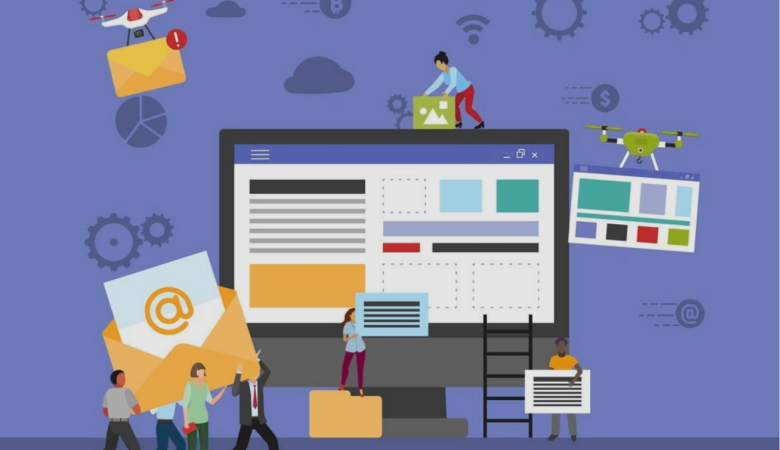“If you’re looking for a first project, start with a problem that you’re facing — turn inward and identify a few pain points in your life.”

Brynn Evans, UX Lead of Google’s Communications
Brynn Evans is the type of person who everyone instantly likes. She’s personable, articulate, and has a mission-driven ethos about her work and life. She studied Psychology (BA) & Science and Technology in Society (BS) at Stanford University, Cognitive Science (MS) from UC San Diego, and spent time working at the legendary Xerox PARC, all before transitioning to user experience design where she now feels driven to bridge the gap between technology and people. She often refers to “social technology” to describe her passion — using technology and design thinking to address the real problems we face in society.
Today Brynn is a UX Lead at Google, managing four products teams in the “Communications” technology org including Project Fi, the Google-owned and operated mobile phone service. She’s also an avid community organizer and innovative leader in the field of UX — she co-founded XX+UX (a monthly meetup for women in UX), co-founded the Awesome Foundation chapter in San Francisco (that gives monthly grants of $1000 to people doing “awesome” work), co-organized an exclusive design thinking conference called Overlap, and regularly speaks at conferences around the world.
Brynn’s career has garnered accolades, awards, and published works, establishing her reputation as someone who everyone wants to work with. I caught up with Brynn about her feeling on current trends in the industry and what the future holds.
What’s your opinion on current trends?
“I see a lot of design trying to apply metaphors from real life to make technology feel more natural. Google’s Material design is about using cues from paper and physical materials to create an illusion of familiarity on the screen. Apple’s Force Touch is about using haptic touch in more natural ways. Uber’s new redesign is about connecting atoms and bits — uniting the physical and the digital worlds. These designs aren’t all equally successful (yet) but it’s a nice direction to be headed because many people still see technology as ‘hard to use’ or ‘not for me.’ We’re in an era of trying to bridge the gap between technology and real life.”

Atrium at Google’s Dublin Campus
Where do you see the industry headed?
“Our industry is often criticized for being insular or solving problems that no one cares about (e.g., artisanal firewood??) Luckily, I’m seeing a shift towards focusing on real problems that people face, not just the surface-level problems of young people in urban areas. For example, the U.S. government has a design team that’s focused on issues like veterans, healthcare, and immigration. Startups like Wevorce are trying to make divorce more pleasant and swift. And in my own work, Project Fi (Android’s new wireless carrier) intends to make mobile connectivity accessible and fair. Everyone needs access to the internet to connect with friends, family, or important information online, and although this sounds like a “techie” problem, it’s not any longer.”
What would you tell someone who is just getting started
or wants to get into the field of design?
“If you’re looking for a first project, start with a problem that you’re facing — turn inward and identify a few pain points in your life. From here, focus on what’s at the heart of that problem and start designing out realistic solutions. Aim for 5-7 different solutions. Then test out the top ideas on yourself or with friends and family. See which solutions worked best and what you would change or modify about each. Rinse and repeat.

Open seating area at Google’s London Campus
Although that might be sort of vague, we are all designers of our own lives so it’s easy to get started by finding problems that we’re intimately familiar with. Solutions will flow more naturally and you’ll see how this will you oriented towards solving problems rather inventing solutions. There are way too many apps today that are a half-baked solutions to no real problem — that’s not good design no matter how shiny or beautiful they may be.”
What is one Sci-Fi technology you want to have
right now, and what would you do with it?
“Well, Virtual Reality (VR) already exists today but I want next-gen VR, whatever that means. The best experience I had with VR was actually in an Uber, when I was sharing a ride with a friendly stranger. We were stuck in traffic, so he pulled out a VR headset from his bag and asked, ‘Do you want to go to Mars?’ I said yes! So I put on this headset on and suddenly I’m standing on the surface of Mars, looking all around at the dirt, crevices, mountains, and looming sky above. It was incredible. Then I advanced to a new scene, and then another. I started touring all the popular places around the world. I was teleported to Paris, Egypt, India, the Amazon…. all these beautiful places around the world felt so real and so present.
It reminded me that VR has the potential of making the world more accessible to people. If you can tour around places that feel as if you’re actually there, you could develop an appreciation for other people’s lifestyles and culture without needing money to travel. Of course there are other great applications of VR too, like helping people work through physical disabilities (e.g., learning to walk after an accident).”

Office at Google’s Mt. View Campus
Looking back on your earlier self, if you could give
yourself one piece of advice, what would it be?
“Never think that you’re not good enough. I’m more or less a self-taught designer so I had a lot of moments feeling like I didn’t know enough to be a UX designer. I see this pattern in new grads and other people transitioning into the field from other professions. But the truth is, design is about solving problems in creative ways so we need different perspectives from different types of people. We need healthy debate. We need to always have an open mind and try out new things. That comes from expressing your opinion and not worrying about how good you are or how much you know. You just gotta go for it until you realize that your perspective is the perspective that everyone wants to hear.”





“design is about solving problems in creative ways” never in my life have I heard a statement so true is really strikes a cord. Even if you have a service or product to sell, the problem most people online have is how to sell said product or service. Ensuring a proper way to pitch that to the masses online is key and a good design (especially in web design) can make or break a business.
An example of this is an online store. If your store is poorly designed, people will feel intimidated and wont buy from you but having an effective, simple design that paves the way to access and pay for products can bring in those who would otherwise feel overwhelmed and encourage them to shop.